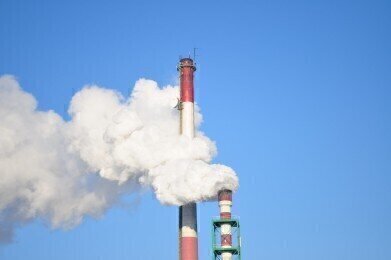Air Monitoring
What is a Particulate Matter Sampler?
Feb 06 2015
Air pollution is a serious problem for many people, especially in the major cities around the world — including in the United Kingdom. The pollution comes from many different sources: Saharan sand and exhaust emissions from vehicles have all hit the headlines.
Airborne particulate matter (PM) is usually of a complex composition. Atmospheric monitoring in the United Kingdom concentrates mainly on measuring a quantity known as PM10 Mass Measurements. PM10 particles are small particles of less than 10µm diameter and are small enough to be able to pass into the lungs — hence the concern for health. Susceptible people — pre-existing lung or heart problems and the elderly and children — are most at risk with exposure leading to the potential of respiratory or cardiovascular problems, which in extreme cases can lead to death. This article, Clean Air – Still a Political Objective After 60 years, discusses some of the issues with airborne pollution.
The principal source of airborne PM10 particles in Europe is from traffic emissions, and there are regulations that set limits for airborne pollution in the UK and Europe. To meet the regulations governments have to monitor the particles in the atmosphere, and for this a particulate matter sampler is used.
Samplers galore!
There are several different methods for sampling airborne particulate matter. Some offer direct reading of the measurement meaning continuous measurements of particulate concentrations can be made; gravimetric samplers collect particles on a filter which is then weighed in a laboratory.
In the UK the most commonly used methods for the measurement of PM10 mass concentrations are:
- filter-based gravimetric samplers (basically weigh the particles on a filter paper), and
- Tapered Element Oscillating Microbalance (TEOM) analysers.
Gravimetric Analysis
The reference method for PM10 analysis in Europe — European Standard EN12341 as defined by the EU First Air Quality Daughter Directive (1999/30/EC) — is based on a gravimetric method. The three main requirements are a size-selective sampling inlet, a filter medium and a known flow-rate of air through the filter medium. There are several variations used and the particle are generally measured over a 24 hour period. The devices do not provide an on-line PM10 count as the filters have to be measured in a laboratory setting.
TEOM Analysers
These devices are the most commonly used to provide PM10 data in the UK. It provides a continuous reading and so has the advantage that it can monitor changing conditions and supply public information. The sampler relies on the oscillation of a glass tube. The frequency of oscillation is proportional to the mass of the tube, so as the mass changes — as particles are deposited on the tube walls — the frequency of vibration changes indicating the mass of particles.
In an ideal world the different methods would all yield the same results — but due to the complex nature of PM, the different methods can yield different results. Any method is acceptable as long as it can be shown to produce results equivalent to the reference method.
Smog mask anyone?
Digital Edition
IET 34.2 March 2024
April 2024
Gas Detection - Biogas batch fermentation system for laboratory use with automatic gas analysis in real time Water/Wastewater - Upcycling sensors for sustainable nature management - Prist...
View all digital editions
Events
Apr 22 2024 Hannover, Germany
Apr 22 2024 Marrakech, Morroco
Apr 23 2024 Kuala Lumpur, Malaysia
Apr 23 2024 Kintex, South Korea
Apr 23 2024 Edmonton, AB, Canada


















